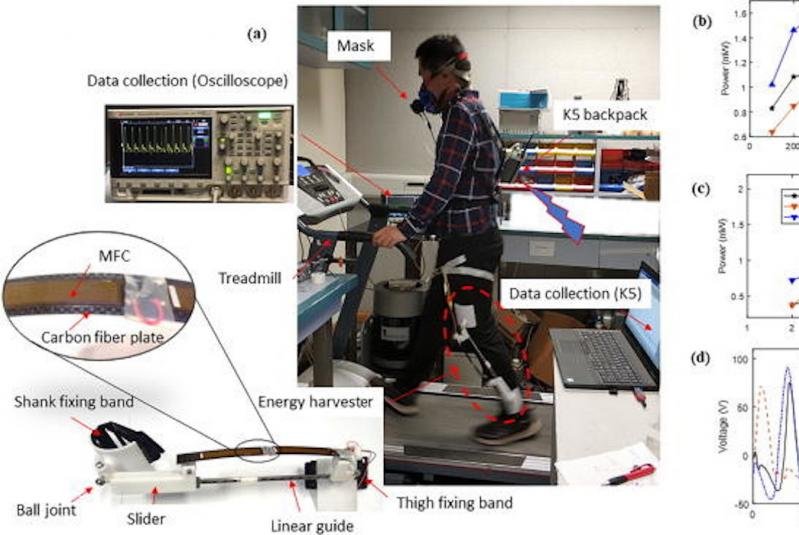Researchers tested their wearable energy-harvesting device on subjects while they walked on a treadmill. Breathing monitors showed the test subjects did not exert extra effort while wearing the device. Photo by Fei Gao, et al./Applied Physics Letters
July 17 (UPI) -- Scientists in Hong Kong have developed a new wearable energy-harvesting device that uses the movement of the human knee to generate electricity. Researchers suggest their device could be used to power wearable health-monitoring technologies or GPS tracking devices.
"Self-powered GPS devices will attract the attention of climbers and mountaineers," study author Wei-Hsin Liao, professor in the department of mechanical and automation engineering at the Chinese University of Hong Kong, said in a news release.
The device relies on a unique macrofiber material that produces electricity when it bends. The device utilizes a slider-crank mechanism, similar to the piston-like movement that powers most motors, to convert the rotary motion of the knee into a linear motion. What's known as a bend beam turns the linear motion into a bending motion.
The lightweight macrofiber composite turns the bending motion into electricity. Tests showed the device can generate 1.6 megawatts during a leisurely walk, without the wearer exerting any extra energy.
Scientists chose the knee joint because of its relatively large range of motion.
"These harvesters can harvest energy directly from large deformations," Liao said.
Most wearable energy technologies rely on vibrations, which limits the energy-producing potential of walking.
"The frequency of human walking is quite slow, which significantly decreases the energy-harvesting capability," Liao said.
Researchers hope their technology -- detailed this week in the journal Applied Physics Letters -- can be brought to market, with the expectation that its commercialization will inspire the development of new self-powered wearable device technologies.
"Self-powered equipment can enable users to get rid of the inconvenient daily charge," Liao said. "This energy harvester would promote the development of self-powered wearable devices."















